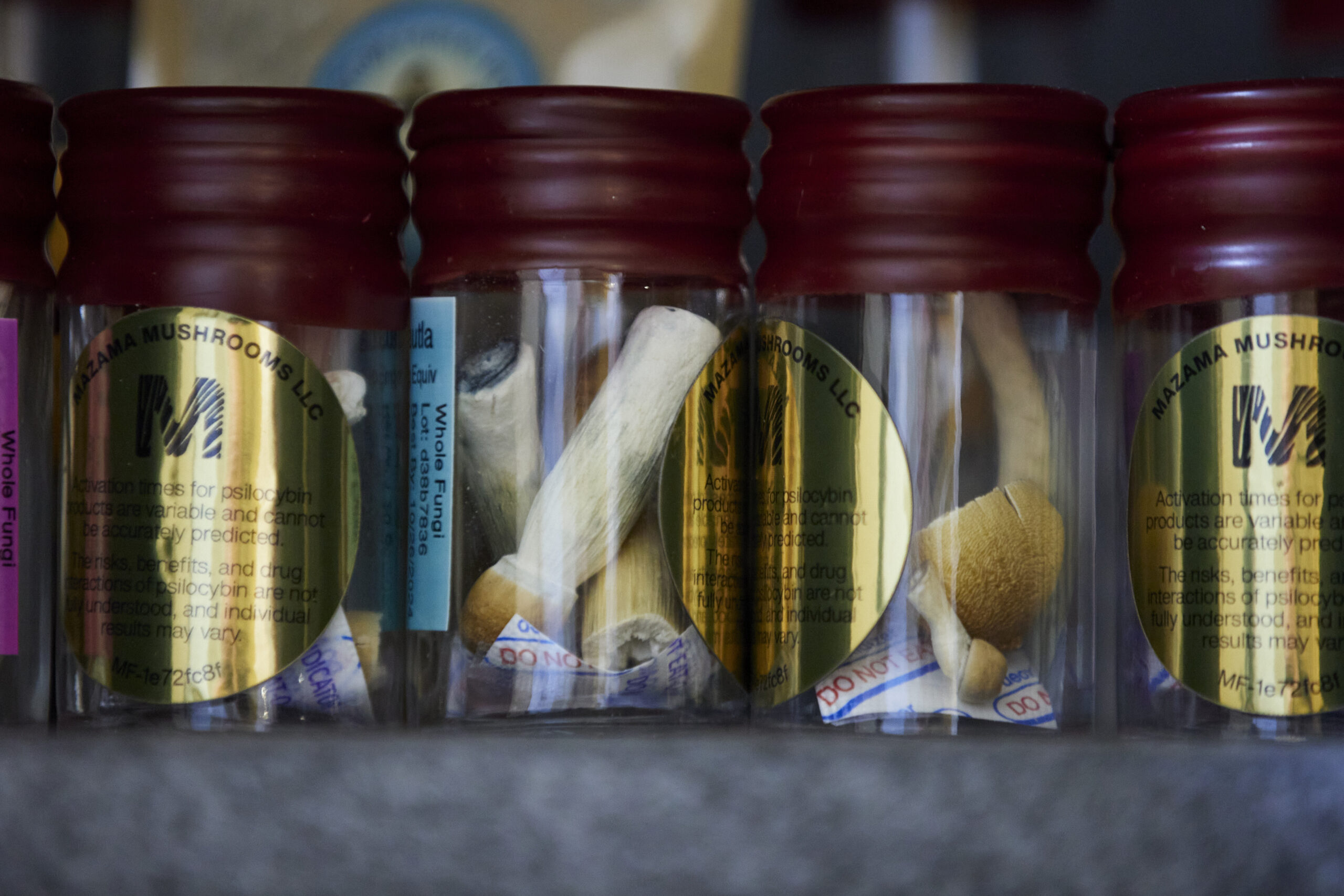Discover Everything You Need to Know About Golden Psycho and Its Unique Features.
All Regarding Psychotomimetic Compounds: Their Function in Psychological Research
Psychotomimetic compounds, such as LSD and psilocybin, have actually garnered enhancing interest in emotional research for their capacity to reproduce psychotic symptoms and supply insight into different psychological health conditions. Their interactions within the brain, especially through serotonin and dopamine pathways, recommend a complicated partnership between awareness and neurobiology that might open novel therapeutic opportunities. As scientists proceed to explore their prospective applications, honest factors to consider bordering their use in clinical setups become vital, increasing crucial concerns concerning safety and educated permission that warrant more expedition.
Definition of Psychotomimetic Substances
In the realm of emotional research, psychotomimetic compounds are materials that can induce results appearing like those of psychosis, such as hallucinations, delusions, and altered perceptions of reality - About Golden Psycho. These compounds can be classified right into numerous groups, consisting of hallucinogens, dissociatives, and certain stimulants, each generating distinct mental effects
The pharmacological activity of psychotomimetic substances frequently entails modulation of natural chemical systems, particularly those pertaining to serotonin, dopamine, and glutamate. Compounds like lysergic acid diethylamide (LSD) mostly act on serotonin receptors, leading to extensive alterations in sensory perception and cognition.
The utility of psychotomimetics in research lies in their capacity to imitate psychotic signs, giving a model for understanding the underlying systems of psychotic conditions such as schizophrenia. By researching the impacts of these compounds, researchers can gain insights right into the neurobiological and psychological procedures that contribute to psychosis.
Moreover, psychotomimetic substances have actually been checked out for their restorative potential in dealing with different mental health and wellness conditions, consisting of depression and stress and anxiety, highlighting their dual function in both research and prospective clinical applications.
Historic Growth and Context
The exploration of psychotomimetic substances has a rich historic context that dates back to ancient human beings, where compounds such as psilocybin mushrooms and peyote were made use of in spiritual and healing methods. These very early uses often intertwined with spiritual rituals, recommending an extensive reverence for the modified states of awareness induced by these compounds.
The mid-20th century noted a significant juncture in the study of psychotomimetic compounds, specifically with the synthesis of LSD by Albert Hofmann in 1938. The subsequent popularization of LSD in the 1960s catalyzed a wave of rate of interest in both its emotional effects and prospective therapeutic applications. Researchers began to check out just how these substances could resemble psychotic states, giving understandings into mental disorder.
Nevertheless, the raising association of psychotomimetics with counterculture motions caused governing reaction, finishing in the criminalization of most of these substances. Despite these challenges, the revival of rate of interest in the restorative capacity of psychedelics in the 21st century has triggered renewed research study. This historic trajectory highlights the advancing assumption of psychotomimetic substances, changing from like it spiritual compounds to subjects of scientific inquiry and, potentially, therapeutic guarantee.
Mechanisms of Action
Understanding the mechanisms of activity of psychotomimetic substances discloses the complex methods these compounds communicate with the brain's neurochemistry. These compounds primarily apply their results with modulation of neurotransmitter systems, particularly serotonin, dopamine, and glutamate. Several traditional psychedelics, such as psilocybin and LSD, mainly act as agonists at serotonin 5-HT2A receptors, leading navigate here to altered assumption and cognition. This communication not only affects sensory handling however also boosts psychological and introspective experiences.
In enhancement to serotonin, dopaminergic paths are dramatically affected by substances like mescaline and specific cannabinoids, which can bring about modified states of awareness and changes in state of mind and inspiration. The NMDA receptor incongruity observed with materials like ketamine highlights an additional pathway via which psychotomimetics might cause dissociative states and profound changes in believed procedures.
The neurochemical cascades started by these interactions lead to complex and diverse emotional results. Recognizing these systems is vital for both the innovation of emotional research and the healing possibility of psychotomimetic substances, as they offer understandings right into the underlying neural correlates of altered states of awareness.
Current Research Study and Applications
Current investigations into psychotomimetic compounds have revealed a revival of rate of interest in their therapeutic applications, particularly in the fields of psychiatry and psychology. Researchers have begun checking out materials such as psilocybin, LSD, and ayahuasca for their prospective to alleviate symptoms related to numerous psychological health and wellness conditions, including anxiety, stress and anxiety, and PTSD.
Professional tests have actually demonstrated that, when carried out in regulated settings, these substances can promote profound psychological experiences, promoting emotional innovations and improved therapeutic outcomes. As an example, researches have shown that psilocybin-assisted therapy can result in significant decreases in treatment-resistant clinical depression, with effects lasting for several months post-treatment.
Furthermore, psychotomimetic substances are being evaluated for their capacity to foster neuroplasticity, possibly enabling more effective rewiring of maladaptive thought patterns. These searchings for suggest that such compounds might function as accessories to conventional psychotherapeutic approaches, boosting the effectiveness of healing interventions.
As study advances, the emphasis is shifting towards recognizing the optimum does, restorative settings, and participant qualities that can maximize the advantages of these compounds. This expanding area holds guarantee for revolutionizing psychological health treatment paradigms and addressing the constraints of traditional psychiatric drugs.
Ethical Considerations in Study

Navigating the honest landscape of research entailing psychotomimetic compounds is vital to ensuring participant safety and the stability of research study end results. Scientists have to prioritize informed permission, guaranteeing that participants fully understand the possible risks and advantages associated with the compounds being examined. This consists of providing detailed information regarding feasible psychological results, consisting of acute and long-lasting impacts, and permitting participants the opportunity to withdraw from the research study any time without penalty.
IRBs evaluate study procedures to safeguard participant well-being and maintain ethical criteria. Furthermore, the potential for coercion should be very carefully evaluated, particularly when vulnerable populaces are entailed.
Confidentiality is another vital factor to consider. Researchers need to implement robust measures to shield individuals' identifications and information, especially provided the delicate nature look what i found of experiences related to psychotomimetic substances (About Golden Psycho). Ultimately, a dedication to ethical techniques not just cultivates trust fund in between scientists and individuals but also boosts the trustworthiness and legitimacy of the research study end results, adding to the advancement of mental understanding

Final Thought
To conclude, psychotomimetic substances, especially traditional psychedelics such as LSD and psilocybin, deal substantial insights into mental disorders with their unique devices of action. Their therapeutic possibility in dealing with conditions like anxiety and PTSD underscores the relevance of ongoing research in this field. Nevertheless, ensuring moral requirements in research study methods is vital for individual security and notified authorization, permitting a liable expedition of these compounds' benefits and implications within mental science.